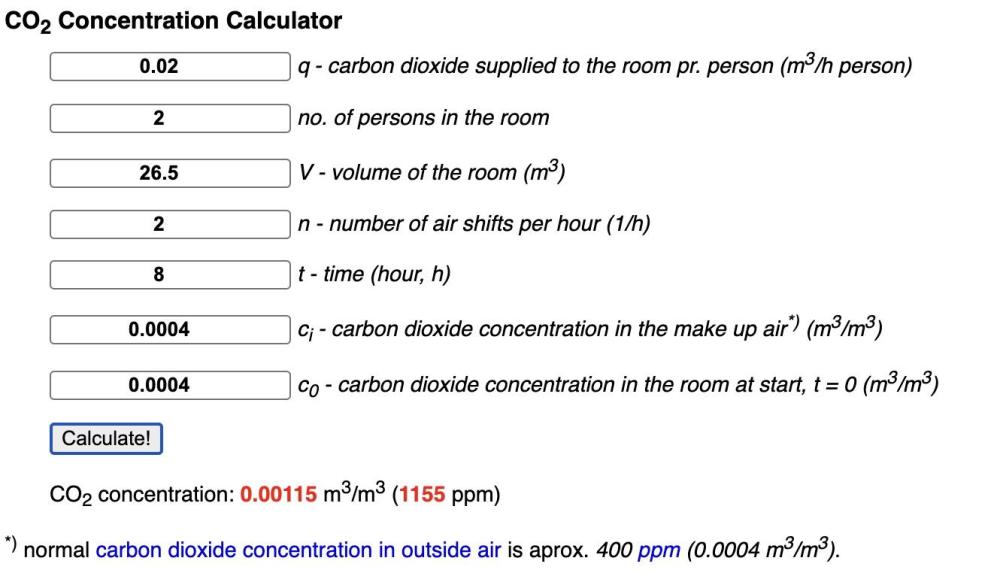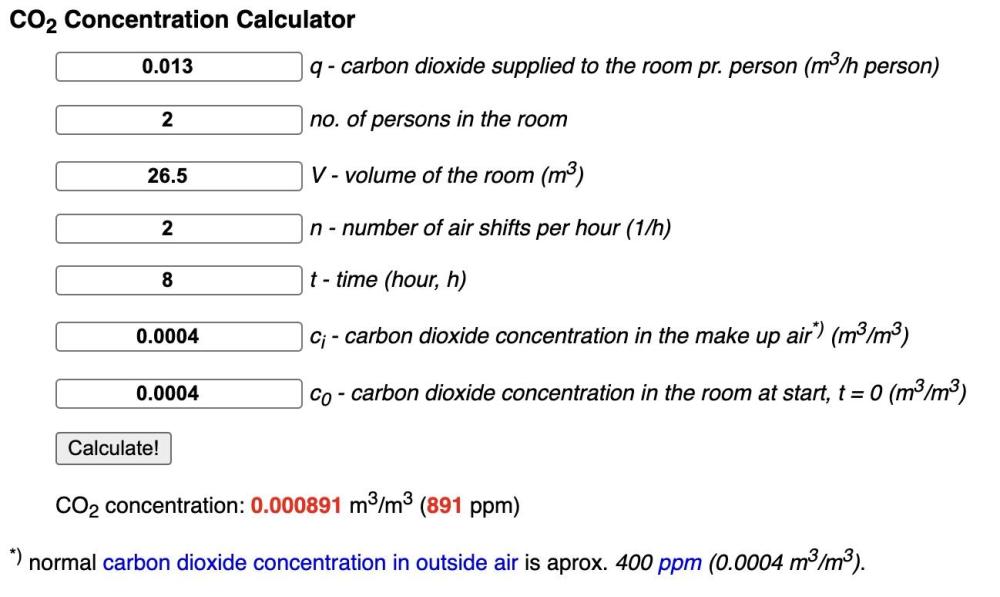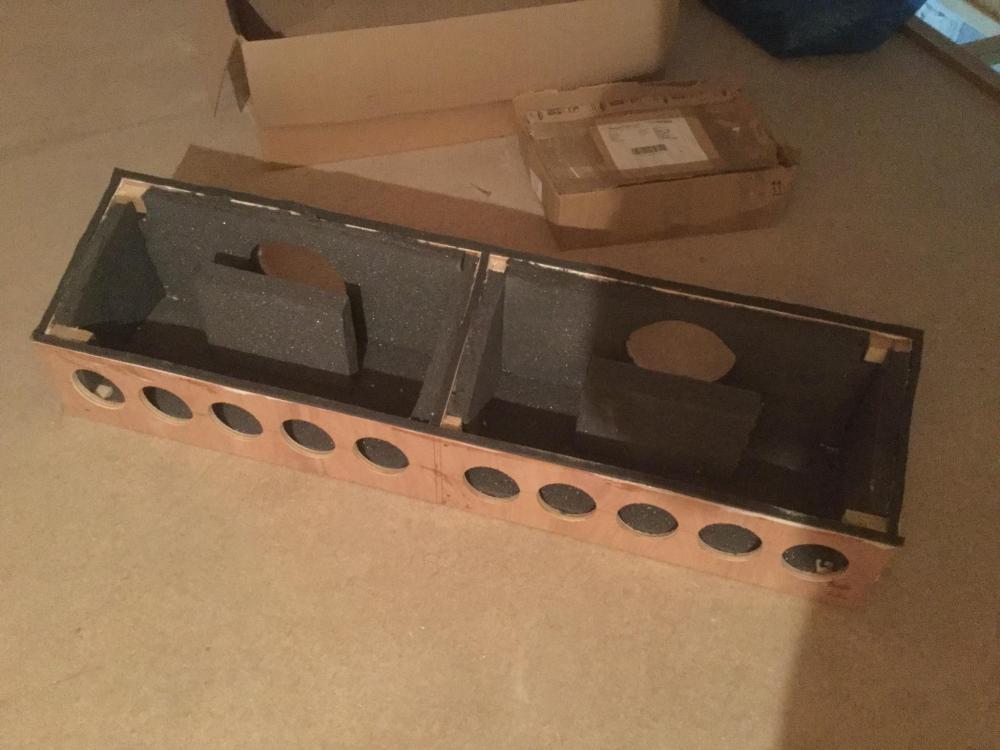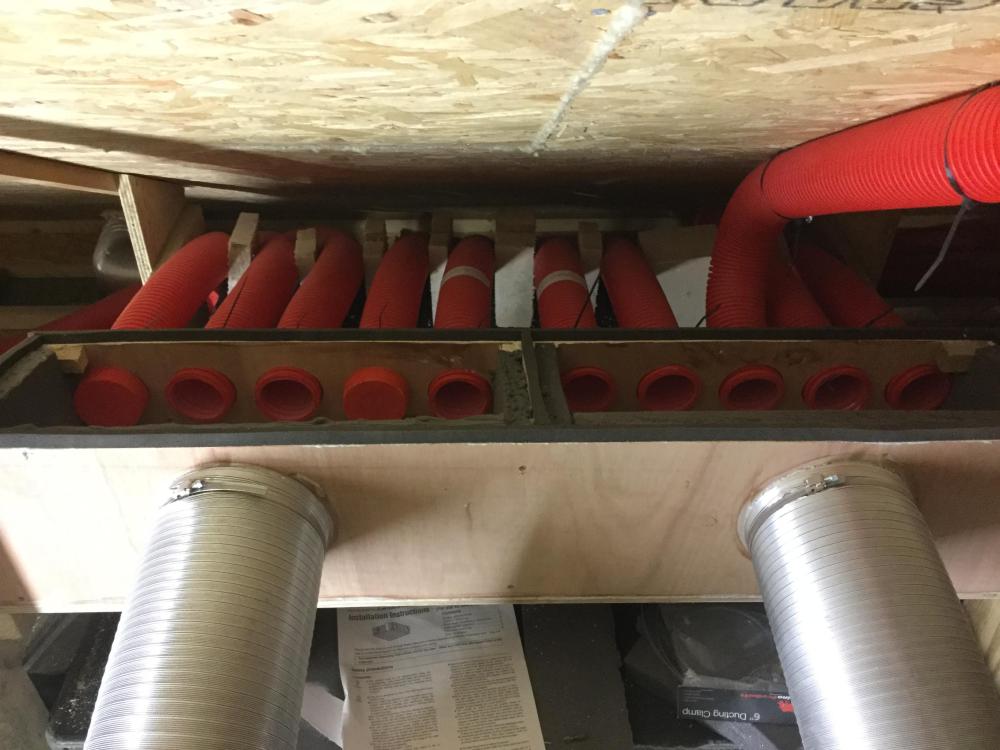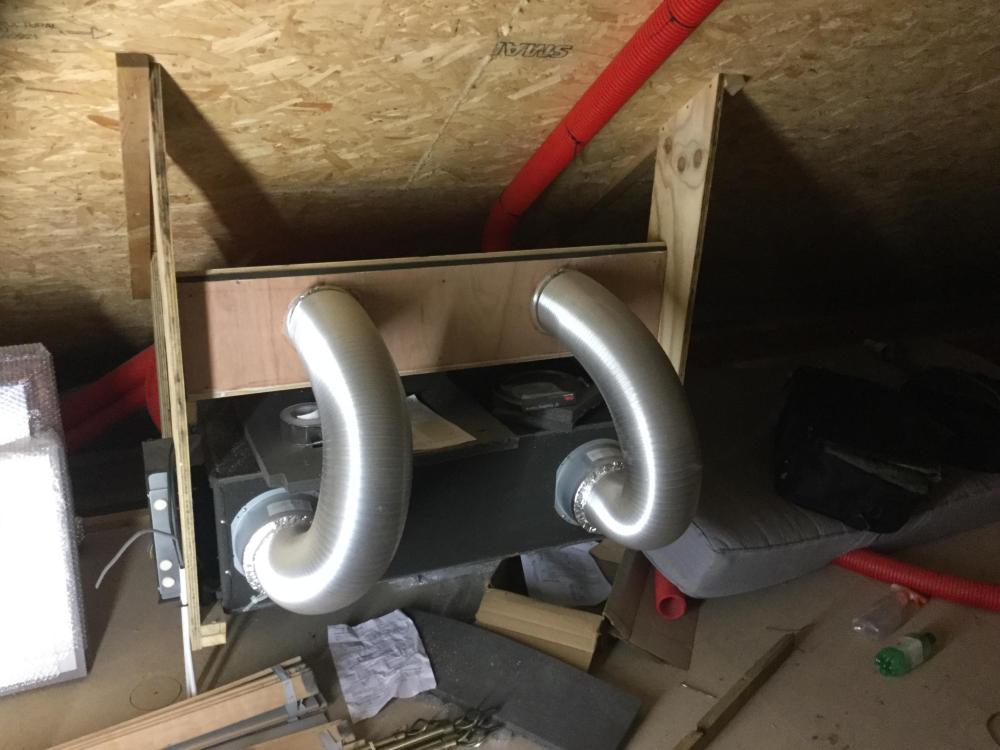Leaderboard
Popular Content
Showing content with the highest reputation on 09/30/22 in all areas
-
Pretty close, yes. My walls are indeed I-beams with Smartyply nailed on. The joints and nail-heads were over-pained with airtightness paint. Windows were foamed and double-sealed with decent tapes by me. Rooflight were upstands painted with airtightness paint. The joint between wall and roof was foamed for insulation and painted with airtightness paint. The joint between wall and concrete raft foundation was painted with airtightness paint. All penetrations were sealed with decent grommets and tapes by me and mostly also overpainted with airtightness paint too. The OSB flat roof was left un-sealed, with some slightly-worrying gaps between boards were clearly visible but there is a Bauder three-membrane warm roof above. Before the air test, I was ready to spray paint the entire OSB roof deck with airtightness paint (form inside) but fortunately it was not needed and Bauder's claim that their roof build-up was airtight has proven true. Above all, the building has a simple L-shaped form. And airtightness was managed by me personally, so I kept an eye on all the details.3 points
-
I have been messed about by bricklayers who have not returned after summer as they were too busy. Got a new one starting Monday who is 30% cheaper!2 points
-
We used small double doors (total width 838mm) in the utility to the UFH and airing cupboard. Works well doesn't take space away from utility. Get a price for standing seam metal roof, can be very expensive. We were quoted £165/m2 3 years ago for either zinc or aluminium. We paid £65 (last year) for a Sarnafil standing seam roof. We had a 194m2 of roof to do, so a considerable price difference.2 points
-
Get some kitchen foil, tape it to the wall, sealing all the edges with tape. leave 23.5 hrs and remove. See if moisture is present under the foil.2 points
-
As promised another update, following many tweaks and a firmware upgrade from Solis. So the existing problems were: Whenever the battery isn't at 100% SOC, it pulls an amount of power from the grid, somewhere between 60W and 100W Even when the battery is actively charging, it still pulls the same 60-100W from the grid, regardless if there is enough PV power to charge the battery and cover loads at the same time. Once the battery is 100% SOC and im generating PV more than my load, I import 0W. Pulsating loads (such as induction hob) the unit can find hard to track, due to their pulsing nature, and the delay in reading the CT clamp and acting upon it. The firmware upgrade was to fix the pulsating load issue, it doesn't completely resolve it, however it is much better tracked now. Solis reduced the polling time for the CT, so it is polled more often than before. The problems with the excess import of between 60-100W remained, however Solis put some variables in the new firmware which allowed them to place an offset, we tried many different values and eventually stopped at a 65W offset, now the grid connection fluctuates between +40W and -50W which overall has fixed the issue as good as can be without draining too much of the battery power. Oddly since adding the second US3000C module, my overnight usage (no PV input) has dropped from around 0.35kWh to 0.2kWh, why i'm not sure but no complaints from me there!! Now have 6.6kWh of usable capacity, to note the original US3000C module had just dropped to 99% SOH, manual states to use the newer module as the master, which I did, so its now once again showing 100% SOH, and the 1% drop of the older module is handled internally. Upon connecting the new battery, the old battery appeared to receive a firmware upgrade, as it restarted a few times before staying on. Current yearly graph is looking good, still exporting a lot of power, but at least I'm using what i can now: Shown above is a daily example of the battery charging and discharging. This was after a particularly cloudy day which only just saw me reach 100% SOC for a mere moment. The negative battery power denotes power draining from the unit, with positive being a charge. This is the corresponding grid data for the same day. Previously (March 2022) I reported total import of 48.3kWh. Clearly its impossible to compare with another month, and we will have to wait til March has been and gone once again, however here is the monthly data from April onwards: April - 41.2kWh May - 18.4kWh June - 17.1kWh July - 18.9kWh August - 18.1kWh September (So far) - 18.0kWh The tweaks to the system were finalised on May 5th, just checked my emails from Solis and that was the last contact, so April shows another month before the changes. Full credit to Paul Carpenter, the European Engineering Manager as Solis for sticking with me on all these changes til we found the sweet spot! Hope this provides some good info for someone out there thinking of installing battery tech. I'll post another update at the 1year point, though probably 1year from the tweaks, so May next year, and then I'll also be able to comment on my AQ for the import.1 point
-
Hello, am in N. Ireland and I need prices for our newbuild windows . Got one of Rationel, who else would you use? Who would you not use again? Craigs post was really useful too. Kinda terrified, architect asked who was project managing. I am by default. mea culpa I am so green.1 point
-
In Scotland they have to be hard wired, record actual, peak and average over the last 24hrs. Mine is a DETA 1142 (I think)1 point
-
I think 90mm is just enough if you get the best platinum EPS. I tried calculating, using the best EPS I could find: EPS lambda =0.031W/mK, so U = .031/.09=0.3444 W/m/K Google says a standard solid wall has U = 2.0 W/m/K, this gives a tiny improvement, giving an overall U of: 1/(1/2+1/0.3444) = 0.294 W/m/K https://www.insulationshop.co/90mm_grey_polystyrene_ewi_graphite.html I'm with Iceverge though: Max out that insulation, it will hardly cost any extra - it's the labour that costs. We went for 150mm, a friend for 200mm.1 point
-
Absolutely. However, I just wanted folk to know the process is not difficult for the layperson to do themselves.1 point
-
I’ve done the claim myself, recorded the invoices on a spreadsheet. Very easy and simple. HMRC’s guidance notes are surprisingly clear and easy to follow about how to go about the whole process and the claim form straightforward to complete. In fact this part was the least stressful thing about doing the self build!1 point
-
I'm not sure @Marvin It isn't something that I've given too much thought to previously; but now that window closed season is here and I have a lodger that I didn't have before so the door is shut; it's something that needs attention. Drivers for airflow are: - Moisture removal - CO2 removal - Heat transfer Bedroom 1 is 3.2 x 3.6 x 2.3 metres. 26.5 m3 (small) Bedroom 2 is 3.2 x 2.6 x 2.3 metres. 19 m3 (smaller) Bedroom 3 is 2.3 x 1.8 x 2.3 metres. 9.5 m3 (harry potter) I think CO2 is the annoying one. My wife is more sensitive to it than I am. There's an app for that: https://www.engineeringtoolbox.com/pollution-concentration-rooms-d_692.html So we need 2.5 air changes per hour in the largest of the bedrooms to keep CO2 to 2000 ppm or 6 air changes per hour to keep it to 1000 ppm. 2.5 * 26.5 = ~65 m3/hr or ~1.1 m3/minute or 18 L/sec 6 * 26.5 = ~160 m3/hr or ~2.5 m3/minute or 45L/sec This suggests an "occupancy method" of 20 cubic feet per minute per person or 0.55 m3/minute per person: https://continentalfan.com/general-ventilation-how-much-airflow-do-we-need-to-ventilate/ That pretty much tallies with the 2.5 ACH for two people above. And fits with this reference to 10L/sec per person for commercial buildings. https://assets.publishing.service.gov.uk/government/uploads/system/uploads/attachment_data/file/945754/S0973_Ventilation_Actions_Summary_16122020_V2.pdf Sleeping...probably involves less CO2...so a ventilation rate that gives 2000 ppm for active duty would give 1000 ppm for sleeping duty. There's a page for that too: https://www.engineeringtoolbox.com/co2-persons-d_691.html Sleeping should be 0.013 to 0.02 per person not 0.05 which gives about 2 ACH or 15 Litres/sec or 0.9 m3/min or 54 m3/hr per double bedroom: That's...quite a lot MVHR is this: https://www.titon.com/uk/products/hrv-2-q-plus/ So likely needs to run at 40-50% overnight if serving just the upstairs bedrooms. (which it is) In answer to the door grille: 15 litres/sec. One and a half paint buckets. If door gap 0.8 metres wide and 0.01 metres tall area is 0.008 m2 so velocity for 0.015 m3/sec would be 2 m/sec or so. Breezy! Is my maths right here? Top and sides leaking a bit (depending on how badly the door fits) will add a fair bit more as length is longer. 2 cm door undercut brings that to 1 m/sec Or you trick of leaving off the top door stop bead and having 1 below / 1 above. Assuming forced fresh air input to drive that air change. More Google sanity checking. Yanks use forced air heating/cooling so they need a return air path for the heating/cooling air. (which presumably means fewer concerns on CO2 as if the heating/cooling flow is adequate the CO2 should work out too) https://www.energyvanguard.com/blog/can-door-undercuts-work-as-return-air-pathways/ https://www.energyvanguard.com/blog/easy-retrofit-return-air-bedrooms Talking similar orders of magnitude. 2 cm off the bottom of the doors...or a 20 cfm / 15L/sec / 0.5 m3/hr grille with a decent pressure drop.1 point
-
EWI pretty much guarantees no interstitial condensation however at 90mm of EPS you'll probably be about 0.35. The cost to increase external insulation thickness in minimal really. Almost all of the cost is the render, fixings etc. Can you do better than 90mm?1 point
-
You could try using this online calculator as a second opinion. It also shows the condensation risk (interstitial means between layers).1 point
-
Hi all Can anyone recommend a company to carry out airtightness testing, in NI? Thanks1 point
-
There are umpteen fixes available (Sageglass, anti-solar film, reversible single-room heatpump, ability to circulate water around the ufh to spread heat around, outdoor blinds, careful design of penetration rate of the wall (decrement delay), and many more. You can also solar heat model the structure. Experience here is that MVHRs move very little heat, and that it is important to consider autumn and spring sun angles when designing the depth of the canopy. I am currently planning a veranda partly to shelter my 2 south facing windows where the rooms overheat, and I am planning a front to back depth of 4-5m at a height of around 3m. F1 point
-
I think folk get carried away with the size of their self-build and too many bathrooms. I thought our previous house was too big at 350sqm, we didn’t use half of it. Our build is 202sqm but we will use all of it so will feel as big as the previous place although I think we have too much glass on the south elevation.1 point
-
1 point
-
I live in an old solid walled house, no Internal or external insulation and I don’t have any problems with damp or mould. It had been empty for a year or so which meant I had to overheat it for about 18 months to get it dry and warm again but since then no problems and my bills are pretty low especially as I never think about leaving heating, lights etc etc on. … oh and TV for the cat.1 point
-
Pro forma is fine for HMRC but just in case a proof of payment is a good idea1 point
-
Not sure I agree it's a total bodge. Just an older way of doing things. Here are a copy of the operation instructions emr-11.pdf1 point
-
I'm not convinced by that one - it means you need 2 hands to open both doors so have to put things down. Remember that in well insulated houses * cooling is as big an issue as warming. North windows let in a nice quality of light. One of the biggest problems we wrestle with hear is preventing houses overheating in summer, or in the spring / autumn months. Ferdinand * This may be everything now given the recent building regs changes - I had a building whinging to me last week about how all his future cavities were going to have to be 150mm not 100mm to fit enough rockwool in to meet the requirements. 😛1 point
-
Our living room/kitchen/dining area is almost identical to yours including the size. We also have a very similarly sized island. We elected to put the sink and hob on the island for a few reasons. Firstly it meant we removed the kitchen units entirely from the back wall. This gave us space back and took a load of cost out of the kitchen. Our island has several long deep drawers which are more practical than cupboards. It meant we could look into the room when in the kitchen and enjoy the view we bought the room plot for rather than have our back to it. The dishwasher is in the island too so it means the hob, sink and dishwasher are all together so no need to wander round the kitchen carrying stuff from area to area. I can post a pic if you like including a 3D render. On the the 3D render, if you haven’t done it I highly recommend it. I did mine myself using RoomSketcher.1 point
-
We have a clean island, in this house and the last. Not keen on sinks or hobs in islands and I'm the one who cooks.1 point
-
1 point
-
I would not use pedastals on stone. They are point loads and will sink and move. Cheapest way to make up levels is compacted hardcore then lay your pavers on a 30-50mm bed of mortar. Firstly, build a brick wall all around the paved area up to the FGL and use nice facing bricks. Then your hardcore is held within and you pave up to the same height as th edging bricks. Don't forget your fall.1 point
-
The issue is the retrofit market, and dealing with people that have kept their old boiler on life support for years (via a poor value BG service plan most often) and then it terminally dies in the middle of winter and they make a snap decision to install a heatpump tomorrow, but with minimal disruption please as we just redecorated. At best the conversation about new rads gets someway before being abandoned due to them being obsolete given the aspirations to install UFH in the remodeling project that's always a couple years away... While there's absolutely nothing right about this decision process the truth is it's going to play out hundreds of thousands of times over the next decade. So manufacturers are bound to try and position their ashp as the perfect drop in for an ancient system boiler. For new builds or well designed deep renovations it's a completely different ball game. But while these high quality projects are the norm on this forum, they're the exception nationally, which is where the heatpump manufacturers will be increasingly spending their marketing1 point
-
If there will be no side load (back filling etc) then no reason to tie walls into slab. No different to brick/block1 point
-
Is that on your plans as it needs planning over 300mm How much do you need to make up ..? Porcelain on pedestals really needs a solid surface1 point
-
1 point
-
Hi All, I am part way through a renovation/remodelling and extension of a stone built semi in North East England. Attempting to improve thermal envelope in main property whilst maintaining breathability of solid stone walls. Casting hempcrete to walls internally, using limecrete floors in original building ground floors and rebuilding/repointing in hot mix lime mortar. Many thanks to all contributors and information I have already gathered as a guest on the forum.1 point
-
1 point
-
1 point
-
As well as a gap under the door I left a gap above the door, and no door stop bead at the top, just down the two sides.1 point
-
Floor loadings are often mis understood or applied. I have countless arguments with engineers who simply quote figures but don’t really understand the mechanics. We sell access platforms, majority on stabiliser legs and floors and nearly always xKN/m2 which is fine for general use but when it comes to non pedestrian traffic then you need to look deeper. point loads and distributed loads a 50kg person in high heals is a 50kg/cm2 load while walking which is a high point load but low imposed or distributed load while a 1000kg standard pallet (1200x1000) is only 0.083 kg/cm2 so the question comes down to what is under the floor. a thick concrete slab on spindle columns can withstand a very high point load but little distributed load while a tarmac surface over sand or gravel is useless for point loads but good for very high distributed loads. I have positioned and operated 5t+ machines on floors designed for light pedestrian traffic (5KN/m2)1 point
-
Main thing here is tying foundations together. Brickwork can and does move slightly without any problems, a concrete wall has very little give or flex so any differential foundation movement can/will open cracks in the brickwork. Ensuring no heave or settlement is the key in the new foundations1 point
-
Yes, double it then round up. Or halve it and round down. Remember Young's Modulus, only true within the elastic limits of the material.1 point
-
Hi @dnb Your calculating ability far exceeds mine, however my thoughts are: In a home it would make a difference as to where the floor load-bearing supports are. Towards the ends of the joists the limiting calculations may become the crushing strength of the joists the point load capability of the flooring and the load bearing capasity of the supporting wall below. Most people load books around the edges of rooms. The UDL figures you quote seem standard loading design figures. So no more than a typical house with typical contents. However if anyone knows otherwise, I'm sure they will let you know. M1 point
-
standard wall ties? https://www.screwfix.com/p/sabrefix-wall-starter-kit-stainless-steel/56037?kpid=56037&ds_kid=92700065972061616&ds_rl=1249407&ds_rl=1241687&ds_rl=1245250&ds_rl=1245250&gclid=CjwKCAjwhNWZBhB_EiwAPzlhNiBRZStejfxw3WdXtkAPcl9bSVZT_S--brU4-QZaYIJ96ElOvZiBPBoCfNEQAvD_BwE&gclsrc=aw.ds That's how I'm attaching my internal walls to my ICF1 point
-
1 point
-
Mine did similar, it was air in the system. Needs a good blow through with the hose pipe. Once air purged, worked as it should.1 point
-
I agree with almost every word already said. A very noice house with just a few details to refine. 1. Moving the front door 1m towards the front of the house will make moving around in the hall a lot easier. You have the entrance to the stairs, and three doors all in a small space. 2. Either have an understair cupboard or have a deeper cupboard that utilises one of the cupboards in the playroom. 3. Sliders are considerably more expensive than windows, lose a set of sliders in the kitchen. Even if you make one a full height fixed window it would be around half the price. 4. I would put the hob on the island so that you can face the room as you cook. 5. You could probably make the utility room smaller and the pocket door to the plant room will be an unnecessary expense. 6. I don't think the central doors in the dressing room/en suite are a good idea. They are probably better put to one side. It will be quite difficult to furnish the dressing room with the door in the middle. 7. I am fine with the size of the landing, I like them to have a window, but I doubt anyone is ever going to sit there. A second en suite would be nice and you could possibly free up some space if you made the landing a little narrower, but that won't be easy as it requires moving the stairs.1 point
-
Your windows look messy, with the multitude of shapes and sizes. You seem to have lots of glazing on the north side, which isn't good for heat loss. On the kitchen diner you have two big sliding doors, I doubt if two would be opened at a time, so consider dropping to a single one and window in kitchen, this would also give more wall space. Your lounge looks small when you compare to the study which looks huge. Not sure why you have an external door in the playroom. Pocket sliding doors in a utility looks like an expensive solution in to what looks like a plant room. I would be moving things about to get a second en-suite. Do you need two baths? A lot of dead space on the landing. The recessed wall area at the front door seems a waste of internal space, you have two external walls to build, increase heat loss for little gain, as it doesn't appear to covered either, so would end up a damp area. Your heat heat pump is near the utility window and back door, it may be better around the corner and give less noise intrusion.1 point
-
Firstly I rarely comment on the style of a house as that is personal choice, but that said I do like what you’ve done. I can see how the design is more efficient budget wise. The house is definitely a bold and honest design. Can’t tell from the pic but looks like you might be looking at contrasting individuals bricks in the brickwork, or protruding brickwork which I think would be a nice considered (low cost) design feature. Looks like steel roof too again that is a nice idea for that type of house. Just a few minor suggestions: 1. As a family home I’d ensure more storage in hallway. Also think about bringing the front door to the right, creating a small vestibule area. I think that area as it is with bottom of stairs and entrance to kitchen will be a pinch point for a busy family home. 2. Master bedroom door needs reversed. 3. Bedroom 2. Door/wardrobe door clash. Easily resolved.1 point
-
You can use the uni-strut no probs there, if it bodes better, and can likely still be very rigid with no hindrance to the softener going underneath it. Be mindful that the softener is a PITA with noise created from regeneration, so do yourself a favour and but one with electronica, eg so you can dictate when it regenerates ( early hours or midday etc ). Also, note the positions of the overflow and discharge of the softener, as most I’ve fitted have had to be raised slightly off the floor to facilitate the correct ( and effective ) gravity flow away from the unit, particularly where the pipework has to run horizontally away thus lifting the height of where the 2x discharge pipes enter the waste pipework.1 point
-
1 point
-
But surely any container would defeat the airflow around items being cooked? I can understand it working with cake mixes though as the outside of the baking tin is the outside of the cake.1 point
-
That for me is a good reason for NOT using an inframe kitchen then, some of the doors shorter than the rest would annoy my OCD.1 point
-
Recirculating is practically useless for particulates (example). Assuming the extractor catches all cooking fumes as they're produced, you need a HEPA-grade filter to properly remove the finer and most harmful pollution. If you aren't filtering almost everything away on the first pass they will make their way into the general breathing air and you'll be waiting for the recirculator to gradually whittle them down over time. I have never seen a consumer-grade recirculator with adequate filtration, only large and expensive commercial units. At that point it's probably easier and cheaper to get a real extractor and supply air setup.1 point
-
To complete the thread, I have attached an approved G98 Schematic, now my system has been approved by DNO. Also included was the G98 form completed. Electrical Contractor signed as installer. I signed everything else. Also attached type approval certificate for the inverter with my application. G98 PV Schematic example.pdf1 point
-
This company has an interesting foundation system. I don’t know how far they travel. https://www.abbeypynford.co.uk/our-services/housedeck/1 point
This leaderboard is set to London/GMT+01:00









